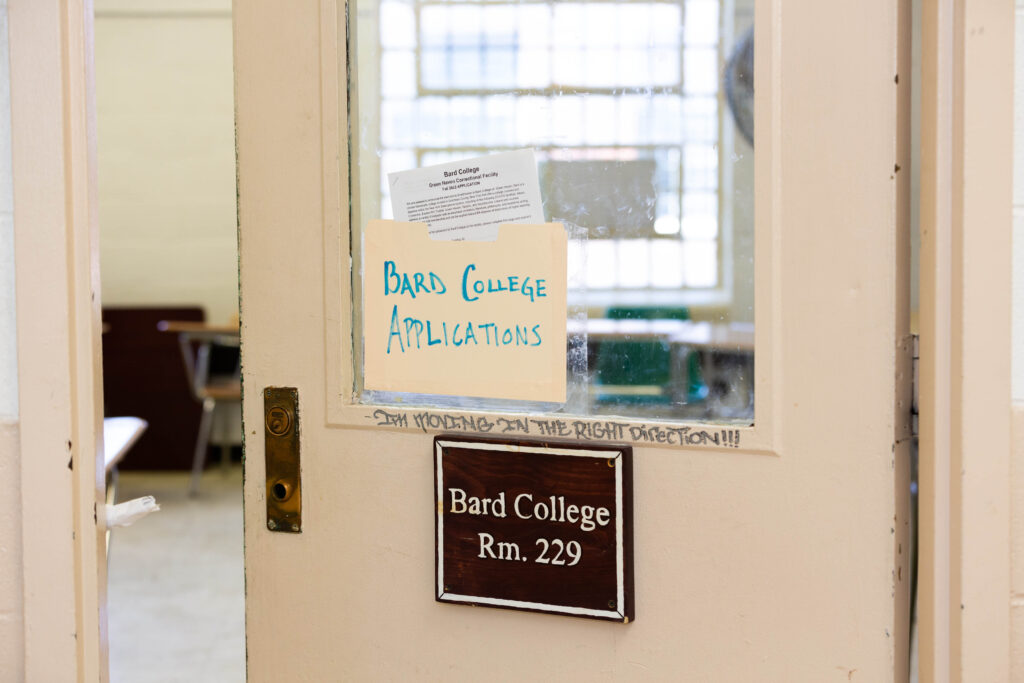Recently ITHAKA S+R has made a major push to expand access to JSTOR inside prisons not just for incarcerated college students but to increase access to academic journals for all incarcerated people. This development comes more than a decade after BPI pioneered the idea of bringing JSTOR into prison. It all began with a question.
The origins of JSTOR’s ventures into prison started in 2007 when Jeff Katz – Bard College’s head librarian at Bard at the time who also provided technological support to BPI in the early years – reached out to ask JSTOR about obtaining the JSTOR index offline. This inquiry came as the college was undergoing a switch of its own – moving to more dynamic and internet-based databases instead of the stagnant database in which professors uploaded their readings on a hard drive for students. The hard drive model had provided an easy way for Bard students inside facilities to obtain their readings as well, but with the shift towards online databases on the main campus, it became uncertain how BPI students might have access to the same if not similar databases as students in Annandale.
To address how BPI students could use the database without internet, JSTOR responded to Bard and worked with BPI to create a thumb drive that contained the entire catalog offline, which allowed incarcerated Bard students to use the database to access basic bibliographic information. Students were able to mirror a search and would pull up a listing of articles as a result of their searches, but without internet, could not download the actual articles. Instead, BPI developed a Research Assistant position for undergraduates on the main campus. BPI students would fill out a form to request articles that students in Annandale would download and print to be brought in. This process took some time and effort but allowed students to conduct their own academic research for the first time.

Since the initial innovation of JSTOR offline, and as JSTOR’s models of providing access have expanded, students can now access JSTOR from the college from a local offline intranet server inside each of the BPI computer labs in the seven facilities where BPI operates. Jed Tucker, Director of Reentry, believes that since there was already a precedent of an academic database for the college inside, BPI’s introduction of JSTOR was welcomed by the Department of Corrections, and everyone recognized the value of giving students an opportunity to use a much larger database.
Fastfoward fifteen years: BPI alumna Stacy Burnett ’20 is now the Manager of JSTOR Access in Prison. With Stacy at the helm, JSTOR is working to massively increase the ways incarcerated people might access the database, including working with Departments of Corrections in some states to “white list” JSTOR access online for access to the full collection of articles. As a student, Stacy had found JSTOR invaluable – even earning the reputation as “JSTOR Queen” among her peers – and has committed herself to ensuring that more incarcerated people gain access to the types of research experiences she did, including using JSTOR.
On October 14th Stacy led a virtual webinar as part of BPI’s technical assistance for the Consortium for the Consortium for the Liberal Arts in Prison: “Getting Started with JSTOR Access in Prisons,” to help partners across our community of practice understand the options for JSTOR online as well as offline, and the approval and delivery process of articles – and how contingent and variable this is depending on states and their facilities. To date, JSTOR operates in 106 sites with offline access and approximately 28,000 students have access to JSTOR’s index.
As the relationship between BPI and JSTOR comes full circle, we continue to push the envelope. Stacy’s presentation has inspired BPI’s IT Technician Jeff Gregory to revamp how BPI delivers JSTOR, where it lives on the server system, and to update the system with new 2022 software provided to BPI by alumna Stacy Burnett. A recording of Stacy’s webinar can be found here, and to learn more about JSTOR access inside prisons, you can also read JSTOR’s recent report, “Supporting the Academic Research Needs of Incarcerated Students.”



